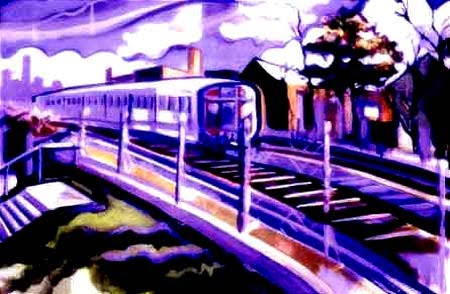FORT MORGAN, Colo. – Railroading is associated with a number of fine traditions, many of which are holdovers from the days when travel by train was the preferred mode of transportation. And while those days are unlikely to return to the same degree, a number of those hallmarks of railroading remain even in the contemporary environment of passenger rail.
The other day, I commented on one of these traditions – dining aboard long-distance trains. Meanwhile, the conductor – the official directly in charge of the operation of the train, not the engineer – remains a standard of order and professionalism somewhere between the equally Americana-flavored positions of baseball umpire and town clerk. Likewise, another classic element of passenger rail is its fantastic job at naming trains.
From the first time that a train skipped some stops along its route to become an express – likely sometime in the early-to-mid 1800s – railroads have been devising names for their trips, especially their most elite trains. Beyond the functional markers such as Express, Special and Limited that tell passengers something about how it operates, there are other designations such as Zephyr, Clipper and Flyer that evoke a sense of speed and elegance in their service. Indeed, even today, the name of the fastest train in the Western Hemisphere – the Acela Express – was chosen to reflect a combination of acceleration and excellence.
Since named trains first appeared, their titles have largely, but not exclusively, blended some geographic or thematic reference with a railroading descriptor such as Limited or Flyer to form a unique and descriptive brand for the train. I’ve previously referred to several of these monikers – the 20th Century Limited of the New York Central, once believed to be the finest train in the world, or the train from which this post is being crafted, the California Zephyr. These names are nothing short of beautiful in of themselves, and were often enhanced by marketing and branding campaigns by their respective railroads. The font used for the 20th Century Limited was synonymous with the Art Deco style popular in the 1930s and 40s, while the Zephyr’s streamlined motif helped to establish a theme that would be later applied to everything from automobiles to appliances. Should you have some free time to spend, a look at Wikipedia’s extensive list of named trains in North America and around the world is well-worth the visit.
Today, Amtrak proudly continues the tradition of naming their trains. Some are holdovers from its predecessors, such as the Southwest Chief of the Santa Fe, the Crescent coined by the Southern Railroad, the Empire Builder of the Great Northern and the City of New Orleans of the Illinois Central, among several others. Meanwhile, several names are newer creations, evidenced in the Downeaster, Heartland Flyer and Pacific Surfliner. Even many commuter rail operations have unique brands, such as the New Mexico RailRunner, Music City Star in Nashville or the Northstar line in Minnesota. Yet whether they are historic or contemporary, all suggest a strong sense of image and identity for the train as it serves a particular purpose or geographic region.
It’s hard to conjure the same sense of excitement and wonder from Flight #1246 from Chicago to Los Angeles – although, to be fair, every train – freight and passenger – bears a distinct number assignment for precision and traffic control. And while some airlines do a good job of naming their planes – Pan Am designated their first 747s as “Clipper Ships” and jetBlue names each aircraft with a distinct blue-themed identity (such as “Blue Moon” or “Blue Crew”) – their individual trips are known only by their numeric code. How much more exhilarating would a trip from New York JFK to London Heathrow be if it was known as the Trans-Atlantic Express, or a Denver-Vancouver crossing dubbed the Rocky Mountain Explorer? Perhaps air travelers might be in just a better mood if they’re challenged to think their trip is part of something special, instead of a number that vanishes once wheels hit tarmac?
In the meantime, passenger rail can and will claim exclusive domain over the evocative imagery associated with travel. As new trains sponsored by the American Recovery and Reinvestment Act come online in the next few years, what will they be called? The Sunshine State Special high-speed train between Orlando and Tampa? Badger and Buckeye Services in Wisconsin and Ohio, respectively? The Golden State Express high-speed corridor in California? The possibilities are limited only by the imaginations of those charged with their selection. We wish them well in their efforts.








No comments:
Post a Comment